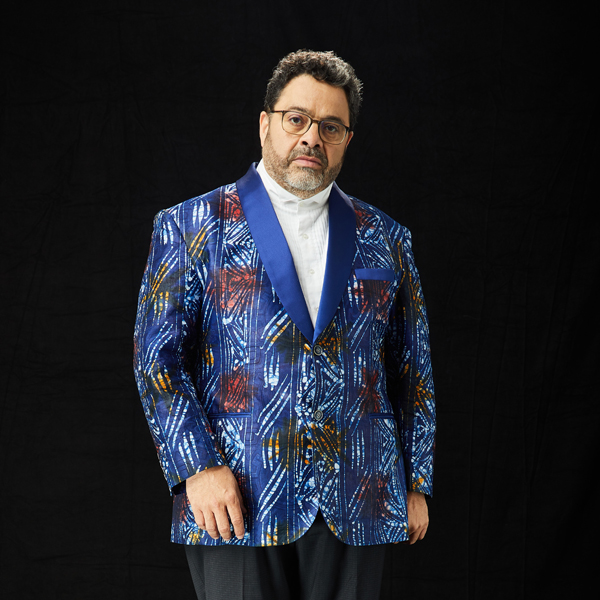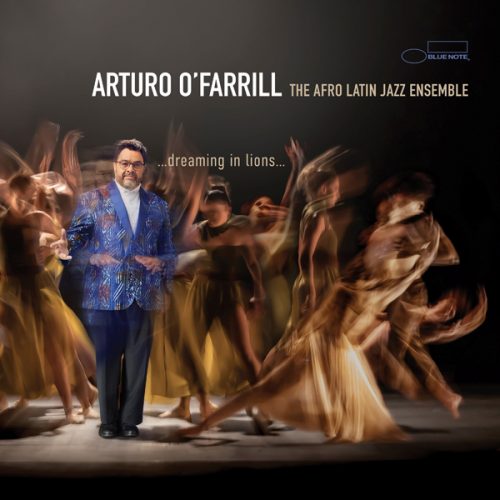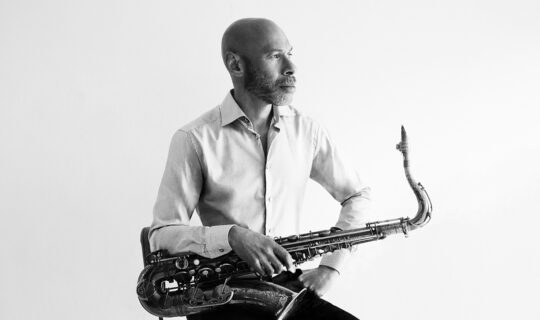September 23, 2021
GRAMMY-winning composer, bandleader, and pianist Arturo O’Farrill has fulfilled what he calls “a lifelong dream” with his signing to Blue Note Records and the release of his Blue Note debut …dreaming in lions… The album finds O’Farrill leading a colorful 10-piece assemblage he calls The Afro Latin Jazz Ensemble, a scaled-down edition of his renowned Afro Latin Jazz Orchestra. The program encompasses two of the four inspired multi-movement suites that O’Farrill has conceived in collaboration with the Cuban Malpaso Dance Company and its Artistic Director Osnel Delgado: “Despedida,” a meditation on farewells, and “Dreaming in Lions,” inspired by Ernest Hemingway’s novel The Old Man and the Sea.
“Blue Note is the home of the greatest music that I have grown up with,” O’Farrill remarks. “You can’t place a moment like this. It’s incredible, and it represents more than music to me. It represents an opportunity to engage Blue Note’s audience with the many different ways that I express my convictions through my art. I know that Blue Note has stood for that, and will continue to engage with socially conscious art. It’s what I’ve been doing for my entire career.”
For O’Farrill, suites afford the space to convey extended narratives and cinematic ideas, a broadness of scope and intent that interests him most as a composer. Like his father, the late legendary bandleader Chico O’Farrill, he is committed to breaching musical boundaries in search of genuine, elevated expression. “I’m so grateful for my father and all my mentors who challenged me to be more open to different influences,” O’Farrill says. He has transmitted these values in turn to his sons, trumpeter Adam O’Farrill and drummer Zack O’Farrill, both of whom are featured on dreaming in lions. Joining them are multi-percussionists Vince Cherico, Carlos “Carly” Maldonado and Victor Pablo Garcia Gaetan, bassist Bam Rodriguez, trombonist and euphonist Rafi Malkiel, flutist/saxophonist Alejandro Aviles, and guitarist Travis Reuter.
With dreaming in lions, O’Farrill adds to a celebrated catalog of previous efforts including The Offense of the Drum (with Vijay Iyer, Edmar Castaneda and other guests); Cuba: The Conversation Continues (with Rudresh Mahanthappa, DJ Logic, more); Familia: Tribute to Bebo and Chico (with Chucho Valdés, the Third Generations Ensemble, and Anoushka Shankar); Fandango at the Wall: A Soundtrack for the United States, Mexico and Beyond (with Regina Carter, Antonio Sanchez and many others); and Four Questions (with Cornel West). Deeply informed by the vernacular and rich traditions of Latin jazz, this music is never constrained by categories; it is consistently global in outlook, in keeping with O’Farrill’s pedagogical vision as the recently appointed Professor of Global Jazz Studies (and Assistant Dean for Equity, Diversity and Inclusion) at the UCLA Herb Alpert School of Music. He is among the foremost practitioners in Latin jazz but also one of the most authoritative composers in current small- and large-ensemble jazz as a whole.
Born in Mexico and raised in New York, O’Farrill continues to deepen his engagement with Cuban arts and culture, always in his distinctively hybridizing way (much like Havana-born Chico O’Farrill, the son of an Irish father and German mother). With Osnel Delgado and Malpaso, O’Farrill has found an ideal partner for his musical vision, a seamless fit between the intricacy and intensity of his ambitious suites and the drama inherent in the staging of a full-scale ballet. “Suites and ballet are sort of kissing cousins,” he says, noting his work for the Alvin Ailey American Dance Theater, Ballet Hispanico, and Evidence Dance Company as well.
“Despedida,” in five movements, was written for performances O’Farrill and Malpaso have given around the world. “We’d play onstage with the dancers, if that was available, or side by side with them, but always in real time,” says the pianist. “The piece is about farewells, and I was going through quite a few of them in my life, so it was poignant. My mother was very ill, friends were departing, I was in the process of changing institutions. There’s something noble about being able to say farewell — not, ‘I’ll see you later.’ It’s about embracing despedida [separation, parting], knowing that there’s a finality to life.”
“Dreaming in Lions,” in nine movements, takes its name from an evocative image in Hemingway’s The Old Man and the Sea, one of O’Farrill’s favorite books from a young age. The protagonist, a Cuban fisherman, is deep in solitude on the ocean when he dreams of lions roaming an African beach coast. (Hemingway owned a 15-acre estate in Cuba from 1939-1960 and remains a cultural icon on the island today.) In his suite, O’Farrill “hears” the dream in a sense. And the title “Dreaming in Lions,” not of lions, is a way for players and listeners “to take part fully in the dream, being vested in that moment so it’s no longer a dream, it’s something you’re seeing. To me the book is about being still in the midst of great movement. It’s about being caught in the stillness of the moment while life swirls around you, which can be a kind of sacred holy experience.”
Writing for the compact instrumentation of dreaming in lions, O’Farrill was able to access an even greater orchestrational palette than with the ALJO: “You can use textures that can be heard more readily. Large ensembles move in bigger blocks and you can cross-voice things, but with a group like this you can get really close up to the sound of the bass pairing with the flute on a melody, for instance.” Throughout the album, amid the versatile acoustic/electric brilliance of Rodriguez on bass and Reuter on guitar, plus the relentless drive and multilayered timbres of the band’s four-percussion team, we hear bristling polyphonic passages and fast-changing tone colors, anchored by unexpected and richly voiced harmonies. “I don’t use chord symbols anymore,” says O’Farrill, whose virtuosity and taste on acoustic and electric keys is central to the album as well. “I use clusters, and that’s the direction I give the soloists, who need to find the intervallic relationships that will work. For me everything is intervals, the DNA of music.”
There is delicacy and intimacy to be heard within the rhythmic storm, and thus does dreaming in lions end, with a solo piano movement played by the extraordinary Alison Deane (O’Farrill’s wife). “Both my degrees are in classical performance,” O’Farrill says, “but I wanted a real classical pianist on this. It’s the final scene in the ballet. After all that has occurred, Osnel is alone, the company is looking at him, and he dances these beautiful motions that indicate he is at peace, the character is at peace, all is well.”







